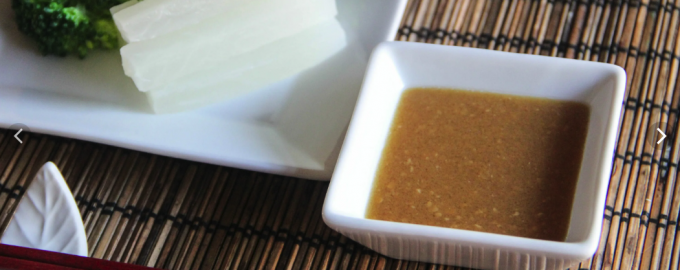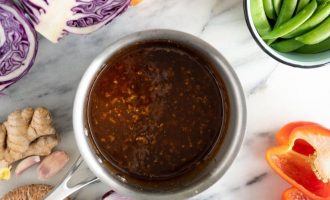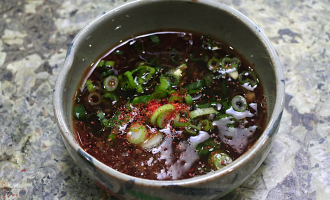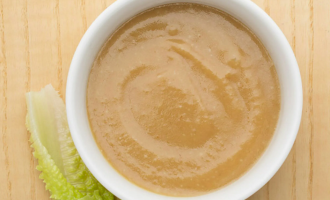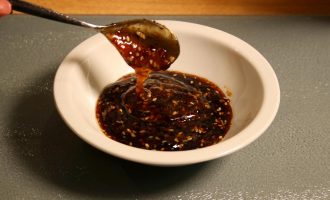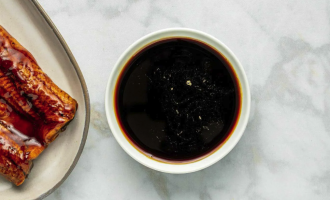- 100g Miso paste
- 2 tablespoons rice vinegar
- 1 tablespoon soy sauce
- 1 tablespoon mirin
- 1 tablespoon honey or sugar
- 1 teaspoon sesame oil
- 1 clove garlic, minced
- 1 teaspoon grated ginger
- 2 tablespoons water (adjust as needed for consistency)
-
In a small bowl, combine the miso paste, rice vinegar, soy sauce, mirin, honey (or sugar), sesame oil, minced garlic, and grated ginger.
-
Mix the ingredients together until well combined and smooth. If the sauce seems too thick, gradually add water, 1 tablespoon at a time, until desired consistency is reached.
-
Taste the sauce and adjust the flavors according to your preference. You can add more vinegar for tanginess, honey (or sugar) for sweetness, or soy sauce for saltiness.
-
Once the sauce is well blended and seasoned to your liking, it is ready to serve.
The miso sauce is typically served with various dishes such as grilled meats (such as chicken, pork, or beef), fish, tofu, vegetables, or as a dipping sauce for sushi or dumplings. It adds a rich umami flavor to the dishes and complements their natural taste.
Miso sauce is a versatile condiment that has gained popularity outside of Japan as well. It is known for its distinct fermented flavor, which comes from the fermentation of soybeans, rice, and sometimes other grains. The fermentation process not only gives miso sauce its unique taste but also contributes to its nutritional value. Miso sauce is a good source of protein, essential amino acids, vitamins, and minerals. It is also rich in probiotics, which promote gut health and digestion.
In conclusion, miso sauce is a delicious and nutritious condiment that adds depth of flavor to a variety of dishes. Its umami taste and versatility make it a favorite in Japanese cuisine and beyond. Whether used as a marinade, glaze, or dipping sauce, miso sauce elevates the overall taste profile of the dish, making it a popular choice for both home cooks and professional chefs.
Facts about miso sauce:
- Miso sauce is made by fermenting soybeans, rice, and sometimes other grains with salt and a fungus called koji.
- There are different types of miso, such as white miso, red miso, and mixed miso, each with its own distinct flavor and color.
- Miso sauce has been a staple in Japanese cuisine for centuries and is widely used in soups, marinades, sauces, and dressings.
- Due to its fermentation process, miso sauce is considered a probiotic food that can promote a healthy gut and improve digestion.
- Miso is also believed to have various health benefits, including reducing the risk of certain cancers, improving heart health, and supporting immune function.
- The umami taste of miso sauce comes from the presence of glutamate, an amino acid that enhances the overall flavor of foods.
- Miso sauce is naturally gluten-free, but it’s essential to check the labels for any additional ingredients that may contain gluten if you have gluten intolerance or celiac disease.

